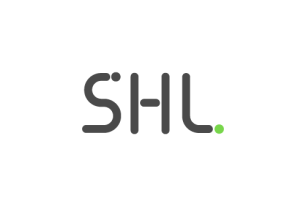Transforming HR Data to Empower Both the Employee and the Employer
How SHL is joining the Velocity Network Foundation to build a blockchain that accounts for candidate experience and data privacy.
Share
HR technology is about to transform. Again.
Organizations have realized tremendous value from the last era of HR technology transformation, spawned by the move to online SaaS tools. Employers have been able to automate and accelerate core HR processes, offer distributed workforce access to common platforms, and centralize their talent data aggregation to generate new insights. However, the zeitgeist of data privacy concerns, combined with user-centric design thinking, is now bringing us into a new era in HR technology, what I’m calling “The Age of Empathy.”
For nearly 20 years, I have been working in HR technology, helping hundreds of the world’s largest organizations use science and technology to measure and manage talent. Throughout that time, I’ve seen HR Technology progress in waves – from an initial focus on core HRIS and record-keeping, then onto automating and accelerating common workflows, and more recently focusing on improving decision quality with predictive analytics (including scientific assessment of talent). These innovations have focused on improving the efficiency of HR processes and the effectiveness of HR programs (i.e., ROI).
Experience Matters
However, there’s a third area of HR technology that historically received much less attention but whose day has finally come: experience. While efficiency and effectiveness deliver obvious benefits to employers, the value of a great technology user experience has seemed at times superfluous. Engineering and product teams in HR technology have focused on core functionality for their paying users (i.e., employers), and both HR and their vendor-partners have ignored what they were putting users through.
That’s no longer the case. Record-low unemployment in many countries has flipped the balance of power to candidates, and in the new war to attract and retain talent, the candidate and employee experience matters. In addition, the widespread availability of great technology applications throughout our personal lives – or what I call ‘the Netflix effect’ – has raised our collective expectations that technology should be intuitive, immersive, and engaging. These expectations for a consumer-grade technology experience are now hitting HR.
In the new war to attract and retain talent, the candidate and employee experience matters.
Privacy Matters
While employers are starting to value and invest in candidate experience and employee experience, there are also massive policy and legal developments related to data privacy. The world is awakening to the data privacy implications of online technology, particularly in applications like social media, where user data is routinely exploited for commercial gains. In response, legislation like GDPR and the California Consumer Privacy Act are now imposing higher standards of practice on employers to protect people’s personal data.
Additionally, individuals have been granted new rights regarding their data. One right, in particular, the Right to Data Portability, granted by the GDPR legislation, makes a quick mess of our current HR technology world. The Right to Data Portability specifically grants individuals the right to take their data with them… including their personal employment data that currently sits in various disconnected systems owned/licensed by employers. How could an individual realistically access and store their employment data, spanning multiple employers throughout their career? And how will employers comply with the new laws?
The world is awakening to the data privacy implications of online technology.
Velocity Network Foundation
This volatile combination of factors related to candidate and employee empowerment is pushing us rapidly into a new era of HR technology. In this new “Age of Empathy”, we have an opportunity for a humanistic reinvention of HR technology to better serve both organizations and individuals. But there is much work to be done to transform current practices.
A key step to empowering individuals to manage their own data is the creation of a public-utility-style universal data repository that individuals can use to store their cumulative employment data and provide access. Blockchain technology offers a clear technical solution to the many challenges of moving to individual “digital wallets” (to support Right of Data Portability) that employers could still access and populate. But – somebody would still have to build this blockchain utility, HR technology vendors would need to align around technical standards to make it work at scale, and individuals and organizations would need incentives and a clear rationale to adopt this new approach and move beyond the status quo.
SHL is excited to be a founding member of the new Velocity Network Foundation to solve these exact issues. Our hope is that the work of the Foundation will empower employers and employees alike to more fully utilize the breadth of tools used in attracting, hiring, and developing employees.
To learn more about the work of the Velocity Network Foundation, visit their website here.









